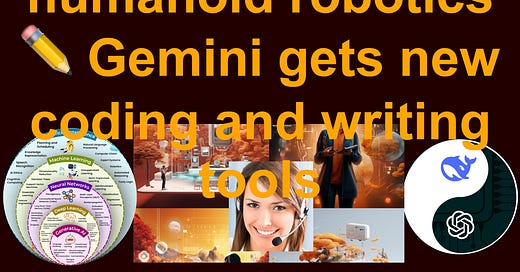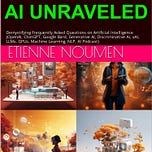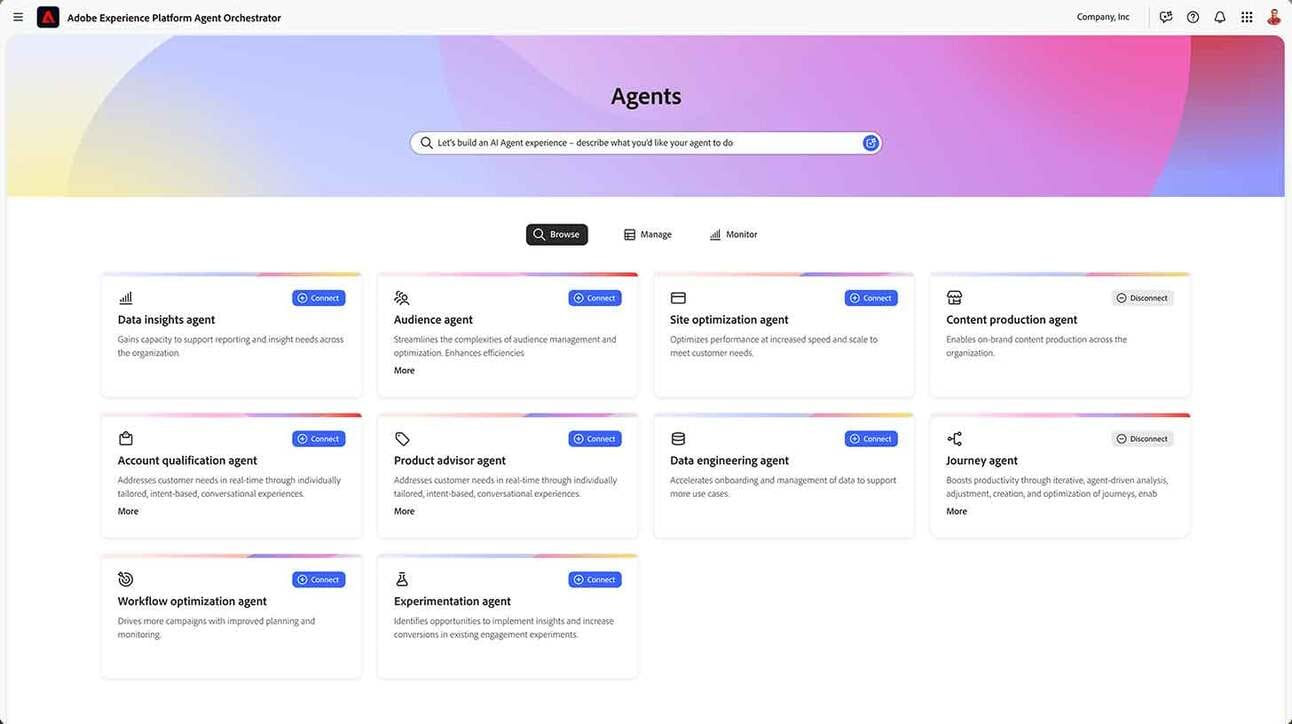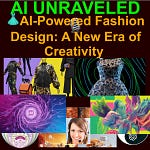A Daily Chronicle of AI Innovations on March 19th 2025
Nvidia's GTC 2025 event showcased significant advancements in AI hardware and robotics, including the powerful Blackwell Ultra chip and the Isaac GR00T N1 foundation model for humanoid robots like 'Blue', developed with Disney and Google. Legal developments saw a US court ruling against copyright for purely AI-generated art, potentially influencing intellectual property laws. Various companies announced new AI models, such as Mistral AI's open-source model outperforming GPT-4o Mini, and Google's enhanced Gemini with coding and writing tools. Applications of AI are expanding, with Japan exploring AI for elderly care, a Californian oyster farm using AI for optimisation, and Arizona's Supreme Court implementing AI avatars for legal guidance. Concerns around data privacy were raised regarding Amazon's AI-enhanced Alexa requiring access to all voice recordings.
🤖 Nvidia Unveils Blackwell Ultra AI Chip for the ‘Age of AI Reasoning’
At GTC 2025, Nvidia CEO Jensen Huang unveiled the Blackwell Ultra AI chip, designed to power next-generation AI reasoning. This advanced processor is built to handle complex multimodal tasks, real-time AI reasoning, and large-scale autonomous operations. Nvidia aims to position Blackwell Ultra as the foundation for future AGI (Artificial General Intelligence) research.
What this means: The Blackwell Ultra chipset could enable faster, more efficient AI models, reducing the hardware bottleneck currently limiting AI advancements. This marks a pivotal moment in AI development, bringing us closer to autonomous reasoning AI systems.
⚖️ US Appeals Court Rejects Copyrights for AI-Generated Art Lacking a Human Creator
A US federal appeals court ruled that AI-generated artwork without direct human involvement cannot be copyrighted. The ruling upholds previous decisions that require human authorship for creative works to qualify for copyright protection.
What this means: This ruling could reshape how AI-generated content is legally treated, raising questions about ownership, fair use, and intellectual property laws. It may also encourage artists to integrate AI as a creative tool, rather than relying on AI to generate entire works independently.
🦿 Jensen Huang Introduces ‘Blue’: NVIDIA & Disney Research’s AI Robot | GTC 2025
During GTC 2025, Nvidia and Disney Research introduced Blue, an AI-powered robot designed to interact naturally with humans in entertainment and service settings. Blue features lifelike movement, expressive facial gestures, and adaptive interactions, making it one of the most advanced AI-driven robots unveiled to date.
What this means: AI-powered humanoid robotics is rapidly advancing, and Disney’s adoption of this technology suggests a future where intelligent robots may become commonplace in theme parks, hospitality, and interactive experiences. Expect AI-driven robots to play larger roles in entertainment and service industries.
🥰 Disney's robots will be powered by Nvidia and Google
Nvidia is partnering with Disney Research and Google DeepMind to create Newton, a physics engine designed to simulate robotic movements in real-world environments, as unveiled by Nvidia CEO Jensen Huang at GTC 2025.
Disney will be the first to utilize Newton for its advanced entertainment robots, such as Star Wars-themed BDX droids, which were showcased alongside Jensen Huang during his keynote presentation.
Nvidia plans to provide an initial open-source release of Newton later in 2025, enabling developers to customize robotic interactions with various materials and integrate it with Google DeepMind's tools.
🏥 Japan Faces Caregiver Shortage, Turns to AI for Elderly Care
With Japan’s rapidly aging population and a severe caregiver shortage, companies are turning to AI-powered solutions to assist in elderly care. Firms like Cyberdyne and Mujin are deploying AI-driven robotic exoskeletons and smart home monitoring systems to help caregivers manage patient needs efficiently. These AI systems analyze patient movement, detect abnormalities, and provide personalized assistance.
What this means: AI-powered elderly care could reduce strain on human caregivers and improve patient safety, but concerns remain about maintaining the human touch in caregiving and ensuring ethical AI implementation in healthcare.
🤖 Mistral AI Unveils Open-Source Model That Beats GPT-4o Mini
Mistral AI has released a new open-source AI model that outperforms OpenAI’s GPT-4o Mini, despite having a fraction of the parameters. This lightweight model is designed for faster performance and lower computational costs, making it ideal for edge devices and smaller AI applications.
What this means: Mistral’s model could democratize AI development, allowing more companies and developers to build powerful AI applications without relying on massive infrastructure. This could also put pressure on proprietary AI companies like OpenAI and Google to reconsider their pricing and accessibility strategies.
🎙️ Amazon’s AI-Enhanced Alexa Will Require Access to All Your Voice Recordings
Amazon’s next-gen AI-powered Alexa assistant is set to become more conversational and intelligent, but there’s a catch—it will require access to all of your voice recordings for real-time personalization. Unlike previous versions, which allowed users to opt out of data collection, the new AI Alexa will continuously analyze conversations to refine responses.
What this means: While this could greatly improve Alexa’s functionality, it also raises serious privacy concerns. Users may have to choose between enhanced AI capabilities and losing control over their voice data. Expect increased scrutiny from regulators over how Amazon handles consumer voice data.
🦪 Marin County Oyster Business Uses AI for Smarter Seafood Operations
An oyster farming business in Marin County, California, has integrated AI-driven monitoring and automation to optimize seafood production. The AI system tracks water conditions, oyster health, and market trends to help reduce waste and improve yield predictions.
What this means: AI is expanding into unexpected industries like aquaculture, helping small businesses optimize production and reduce environmental impact. This real-time AI-assisted decision-making could become the norm across various agriculture and food industries.
🤖 Nvidia’s Advances in AI and Robotics
At the GTC 2025 conference, Nvidia CEO Jensen Huang unveiled significant advancements in AI and robotics:
• Isaac GR00T N1: Nvidia introduced this open-source, customizable foundation model designed to accelerate humanoid robot development. It features a dual-system architecture inspired by human cognition, enabling robots to perform complex tasks with improved adaptability and learning capabilities.
• “Blue” Robot: Developed in collaboration with Disney Research and Google DeepMind, “Blue” is an AI-powered robot showcasing Nvidia’s advancements in robotics and AI integration.
• AI Chip Lineup: Nvidia announced the upcoming Blackwell Ultra AI chips, expected later this year, and the Vera Rubin AI superchip platform, slated for release in late 2026, with an enhanced version, Vera Rubin Ultra, following in 2027. These chips aim to support complex computational tasks across various industries.
What this means: Nvidia’s developments are set to enhance the capabilities of humanoid robots and AI applications, potentially transforming industries such as manufacturing, healthcare, and entertainment.
✏️ Gemini Gets New Coding and Writing Tools
Google’s AI model, Gemini, has been updated with advanced coding and writing capabilities. These enhancements enable Gemini to assist developers in writing code more efficiently and help writers generate content with greater ease. The update positions Gemini as a versatile tool for both technical and creative tasks.
The Canvas feature is available on both web and mobile, enabling users to upload documents and receive AI-generated content, such as speeches from class notes, with the option to refine and export to Google Docs.
In addition to document editing, Canvas supports coding tasks, allowing users to generate and modify code like Python scripts and preview changes in real-time within the Gemini interface.
What this means: The improved functionalities of Gemini could streamline workflows for professionals across various industries, making coding and content creation more accessible.
🤖 Nvidia Unveils Future AI Chip Lineup
At the GTC 2025 conference, Nvidia’s CEO, Jensen Huang, introduced the company’s upcoming AI chipsets, including the Blackwell Ultra and the Vera Rubin AI superchip platform. The Blackwell Ultra is expected later this year, while the Vera Rubin platform is slated for release in the second half of 2026, with an enhanced version, Vera Rubin Ultra, following in 2027.
The Vera Rubin GPU, set for a 2026 release, will feature tens of terabytes of memory and a custom Nvidia-designed CPU, offering notable enhancements over the Grace Blackwell model.
Scheduled for 2027, the Rubin Ultra GPUs will utilize NVL576 rack configurations, yielding 100 petaflops of FP4 precision per chip and 15 exaflops of inference compute at the rack level.
What this means: Nvidia’s advancements in AI hardware are set to provide more powerful and efficient solutions for complex computational tasks, potentially accelerating developments in various AI applications.
🧠 Nvidia Unveils a Foundation Model for Humanoid Robotics
Nvidia announced the Isaac GR00T N1, the world’s first open, fully customizable foundation model designed for generalized humanoid reasoning and skills. Developed in collaboration with Google DeepMind and Disney Research, this model aims to accelerate the development of humanoid robots capable of complex interactions and tasks.
The Groot N1 model is an advancement of Project Groot, expanding its focus from industrial applications to various humanoid robot forms, featuring a dual system for slow and fast cognitive processes.
Nvidia is releasing Groot N1 as open source, along with simulation frameworks and blueprints for generating synthetic training data, aiming to support the development of versatile humanoid robots.
What this means: The Isaac GR00T N1 model represents a significant step toward creating more sophisticated and capable humanoid robots, with potential applications ranging from entertainment to service industries.
🚗 Tesla Secures Robotaxi Permit in California
Tesla has received its first permit from the California Public Utilities Commission (CPUC) to operate a robotaxi service. This initial permit allows Tesla to manage a fleet of vehicles and transport employees via pre-arranged trips. However, additional approvals from both the CPUC and the California Department of Motor Vehicles (DMV) are required before Tesla can launch a commercial autonomous robotaxi service for the public.
This permit marks the initial step in a series of approvals Tesla needs to launch its autonomous robotaxi services, with plans to begin operations in California and Texas this year.
Tesla aims to expand its driverless service using the new Cybercab vehicle, initially offering unsupervised rides in Austin, Texas, and eventually extending to other states by year's end.
What this means: Tesla’s progress in obtaining regulatory approvals marks a crucial step toward offering autonomous ride-hailing services, potentially transforming urban transportation in California and beyond.
🛠️ Adobe’s Army of Enterprise AI Agents
At the Adobe Summit 2025, Adobe unveiled a suite of AI innovations aimed at enhancing enterprise operations:
• Agent Orchestrator: This feature within the Adobe Experience Platform allows businesses to build, manage, and orchestrate AI agents from Adobe and third-party ecosystems. These agents can automate tasks such as content creation, data analysis, and customer engagement, enhancing productivity and personalization.
• Brand Concierge: An AI agent designed to offer personalized customer experiences by creating customized brand websites that respond to visitor interactions, providing tailored content and recommendations.
What this means: Adobe’s AI agents are set to revolutionize how businesses manage customer experiences, offering tools that automate and personalize interactions at scale.
🗣️ Anthropic Testing New Voice Features
Anthropic, known for its advanced AI language models, is reportedly testing new voice features to enhance user interaction. These features aim to enable more natural and dynamic conversations between users and AI systems, potentially improving accessibility and user engagement.
What this means: By integrating voice capabilities, Anthropic’s AI models could offer more intuitive and versatile user experiences, expanding the applications of conversational AI in various sectors.
⚖️ Arizona Supreme Court Taps AI Avatars to Improve Public Access to the Judicial System
The Arizona Supreme Court has launched AI-powered avatars to help citizens navigate legal procedures. These AI-driven assistants will provide real-time legal guidance, help users understand court processes, and answer frequently asked questions related to filing documents and case updates.
What this means: The use of AI-powered legal assistants could make the judicial system more accessible, especially for people who cannot afford attorneys. However, legal experts caution that AI-based systems must remain transparent and accurate to avoid misinformation or biases in legal proceedings.
What Else Happened in AI on March 19th 2025?
Google introduced Canvas, a collaborative space in Gemini, for document editing and code creation, along with the addition of Audio Overviews into the Gemini platform.
Meta announced that its Llama open-source model officially reached 1B downloads this month—a significant rise from its 650M downloads in December 2024.
OpenAI’s VP of Research Liam Fedus is departing to launch an AI materials science startup, with OpenAI planning to invest in and partner with the new venture.
Google revealed TxGemma, a new collection of Gemma-based open AI models, to accelerate drug discovery—set for release later this month.
Tencent’s Hunyuan released 3D 2.0 MV and 3D 2.0Mini, two new 3D generation models for high-quality multiview shape generations.
Stability AI unveiled Stable Virtual Camera, a new diffusion model that transforms single images into 3D videos with 14 dynamic camera paths
Anthropic-backed Graphite launched Diamond, an AI code review tool that provides codebase-aware feedback and fixes, and announced a new $52M Series B round.
🚀Advertise on AI Unraveled: Reach Thousands of AI Enthusiasts Daily!
AI Unraveled is your go-to podcast for the latest AI news, trends, and insights, with 500+ daily downloads and a rapidly growing audience of tech leaders, AI professionals, and enthusiasts. If you have a product, service, or brand that aligns with the future of AI, this is your chance to get in front of a highly engaged and knowledgeable audience. Secure your ad spot today and let us feature your offering in an episode!
🎙️ Book your ad spot now: https://buy.stripe.com/fZe3co9ll1VwfbabIO
🙏 Support the AI Unraveled Podcast and Channel:
Consider buying me a coffee to say thank you for the free tech content on my YouTube channel (@enoumen) and the AI Unraveled podcast. https://buy.stripe.com/3csaEQ1ST9nYgfe4gk
















Share this post